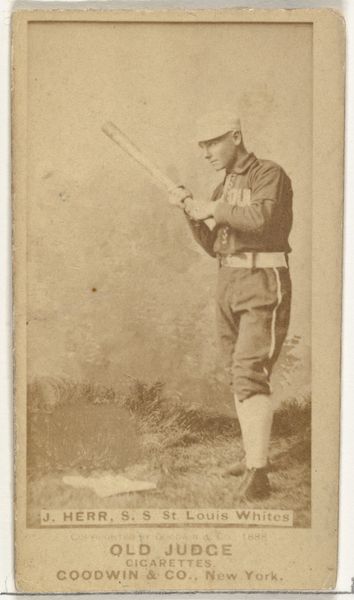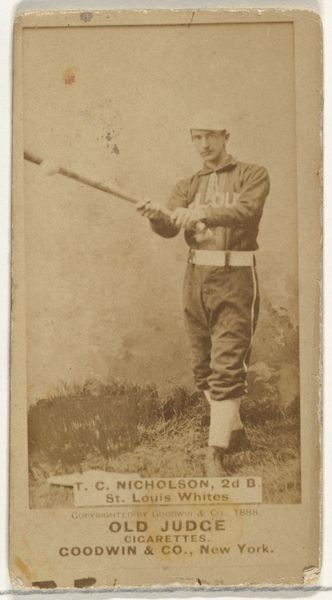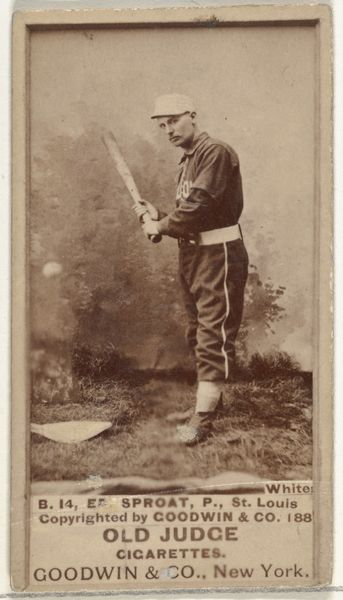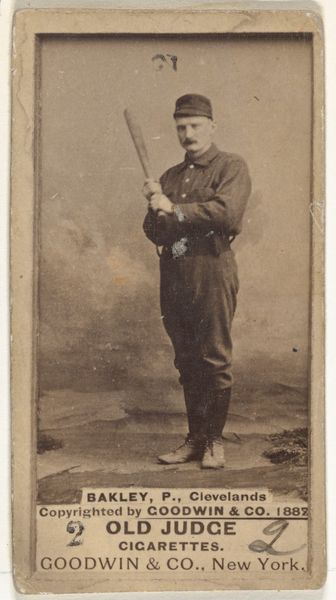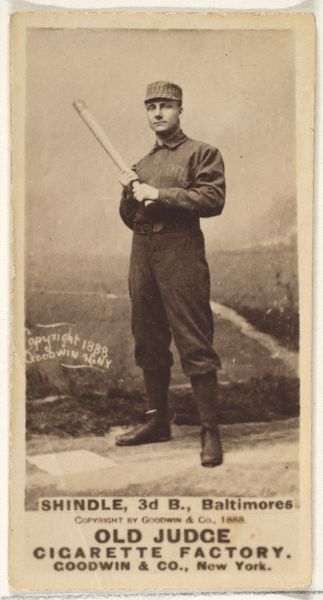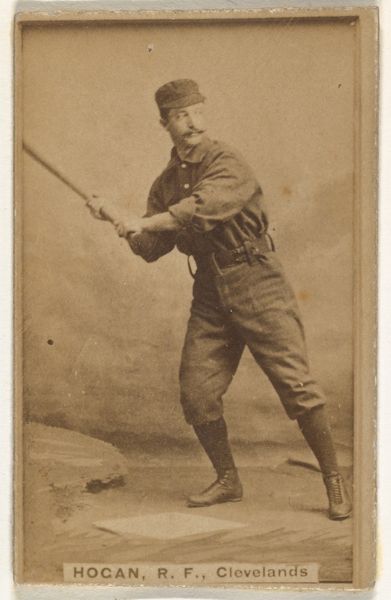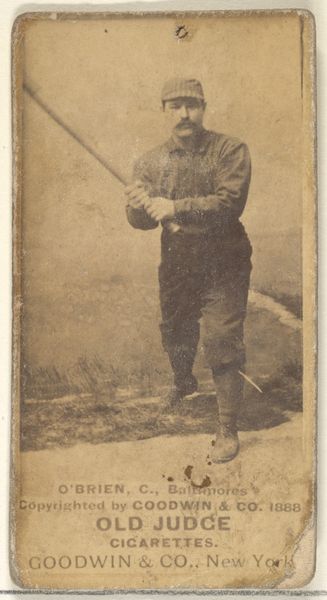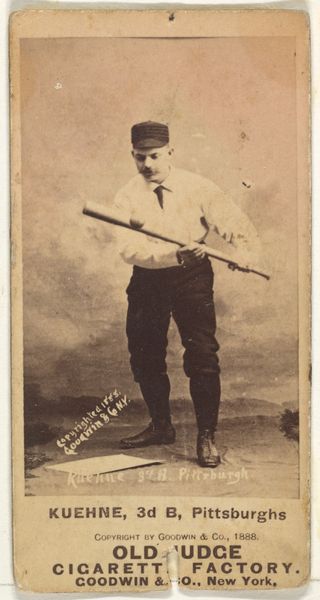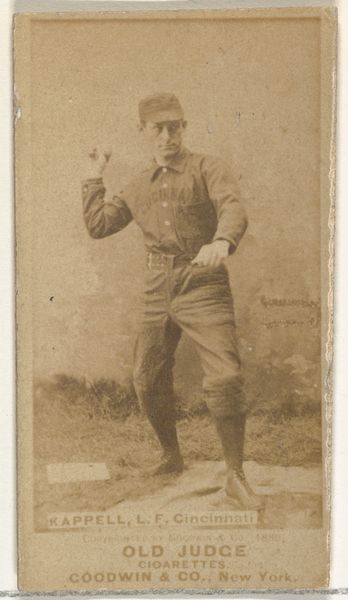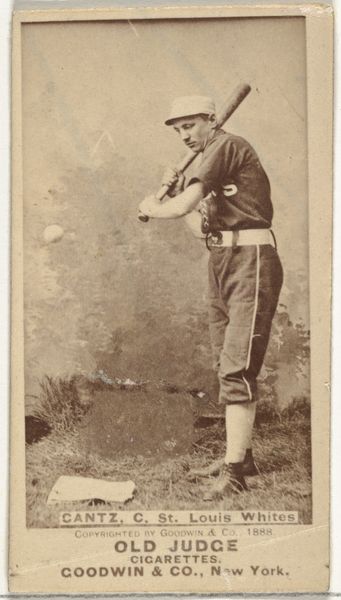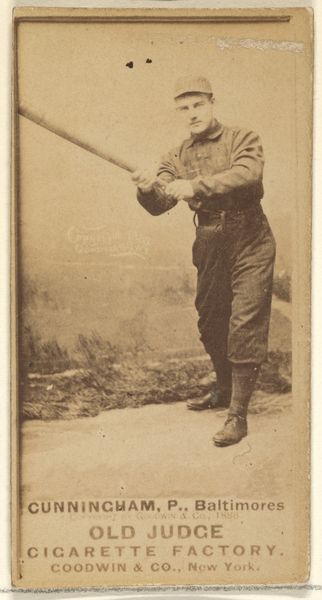
Henry "Heinie" Kappel, Left Field, Cincinnati, from the Old Judge series (N172) for Old Judge Cigarettes 1888
0:00
0:00
drawing, print, photography, albumen-print
#
portrait
#
drawing
#
photo restoration
# print
#
baseball
#
photography
#
19th century
#
men
#
athlete
#
albumen-print
Dimensions: sheet: 2 11/16 x 1 3/8 in. (6.9 x 3.5 cm)
Copyright: Public Domain
Curator: Here we have an 1888 albumen print titled “Henry 'Heinie' Kappel, Left Field, Cincinnati,” one of many baseball player portraits commissioned by Goodwin & Company for their Old Judge Cigarettes series. Editor: Well, isn’t this charmingly sepia-toned! It feels immediately nostalgic, almost dreamlike. He's caught in this poised anticipation, the bat held just so. A brief moment made to last forever. Curator: The albumen print process itself, which involves coating paper with egg whites to create a glossy surface, really adds to that soft, ethereal quality. It's an early form of commercial photography, blurring the lines between portraiture and advertisement. Imagine the scale of production—photographing, printing, and inserting these into cigarette packs. Think of the labor! Editor: True, there’s a fascinating tension here. High art aspirations intersecting with the grimy realities of the tobacco industry! Still, I get lost in the player’s gaze, wondering what filled his mind at that instant. Fear, determination, boredom? Did he think this fleeting image would linger a century and a half into the future? Curator: I'm thinking less about Kappel's feelings and more about the wooden bat itself. Notice how it seems almost an extension of his arm? These bats were made using rudimentary methods, hand-turned probably, from locally sourced ash or hickory, destined to be gripped, cracked, discarded…consumed as swiftly as the cigarettes themselves. Editor: It's curious how this image makes a piece of mass-produced ephemera feel singular, and valuable now. What started as promotional material ended up transcending the disposable to gain historical gravitas, and real monetary value today. Curator: Precisely, that friction between commodity and artistic object— that is where it gets interesting. Editor: Ultimately, I see this as a simple image filled with complex resonances. It leaves me pondering how our disposable culture intertwines with the hopes and realities of everyday people from eras gone by.
Comments
No comments
Be the first to comment and join the conversation on the ultimate creative platform.
